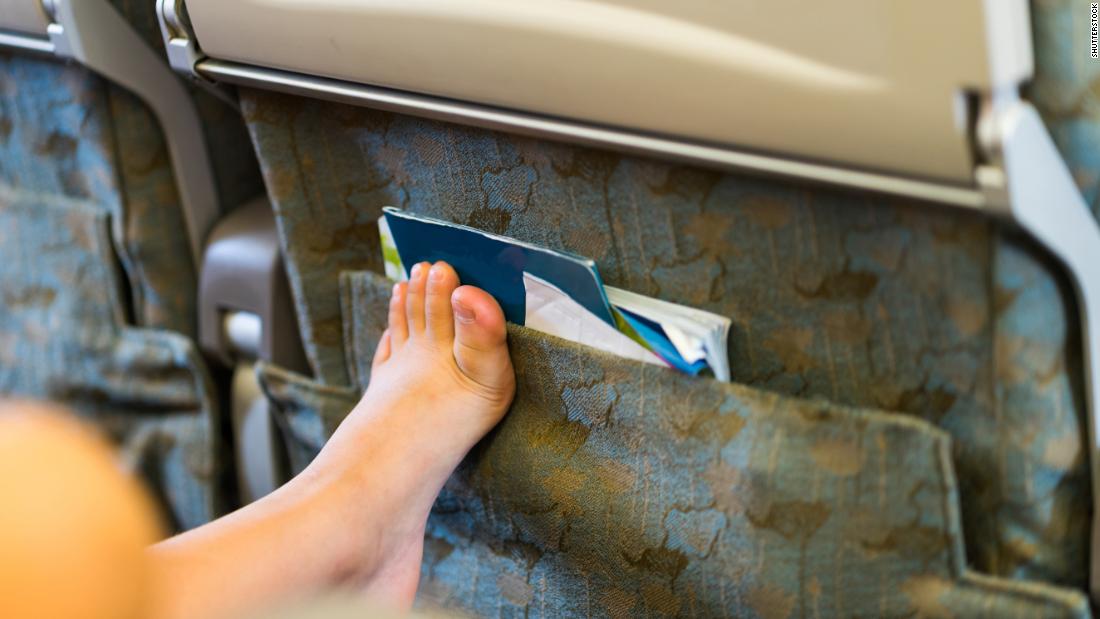Products You May Like
The recommendations will be updated as more information becomes available, the agency said.
If symptomatic passengers are identified during or immediately after a flight, the CDC said airlines should follow enhanced cleaning procedures — including cleaning staff wearing personal protective equipment, such as disposable gloves and gowns.
Airlines should clean any soft surfaces — such as cloth seats and seat belts — within 6 feet of any ill passenger, the CDC said. That includes removing “visible contamination if present” and using other cleaners.
Airlines must report some sick passengers
The CDC also said airlines should disinfect hard surfaces within 6 feet of an ill passenger, including seats and seatbacks, tray tables, seat belt latches, light and air controls, crew call buttons, overhead compartment handles, walls, bulkheads, windows, shades and video monitors.
Airlines should also clean bathrooms used by symptomatic passengers and dispose of any items that cannot be cleaned, such as pillows.
Additionally, the CDC reminded airlines of their obligation, under US regulations, to report any symptomatic travelers on domestic or international flights to US health officials.
Travelers who must be reported to the CDC include those with a fever that has lasted for more than 48 hours, or travelers with a fever and other signs of illness, such as a cough or difficulty breathing.
Not all travelers trust the airlines
Travel blogger Johnny “Jet” DiScala loves to fly but he doesn’t believe the airlines will do a thorough enough job.
“I would not trust the airlines to clean. Period,” he told CNN Travel. “They pay most of those workers minimum wage, and in my experience they don’t do a thorough job to say the least. The cleanest flight will probably be the early morning but don’t trust it.”
DiScala is traveling with disinfectant wipes land wiping everything down that he’s touching, “especially the seatbelt, air vent, window shade, overhead bin handle,” he said. “I’m making a conscious effort not to touch my face and using hand sanitizer just before I eat. Also don’t touch the door handle with your bare hand when exiting lavatory. Use a tissue.”
Veteran aviation journalist Benet Wilson wipes down her seating area as well.
“I recently flew home from Morocco and noticed more people doing wipe downs. My seat and aisle mates asked for my wipes so they could wipe down their surfaces. I’m not going to travel to areas with bans, but I’m planning trips through June.”
But the airlines promise they’re cleaning aircraft to the best of their abilities, with even deeper cleans for some international flights.
Earlier this week, Southwest Airlines spokesman Brian Parrish said Southwest aircraft undergo “regular cleanings between flights and a comprehensive cleaning when aircraft are parked overnight.”
“Our cleaning program includes the disinfecting of all hard surfaces within the cabin, as well as seat and carpet cleaning,” he says. “Southwest will continue to monitor and follow all guidance from the Centers for Disease Control and World Health Organization regarding the coronavirus and make any adjustments to our procedures, as necessary.”
Other airlines echoed Southwest’s comments.
US airlines cutting flight schedules
It makes sense that the airlines would want to reassure passengers.
While passenger worry about the coronavirus has caused a sharp drop in international travel around the world, these are the first cuts made to US flight schedules.

